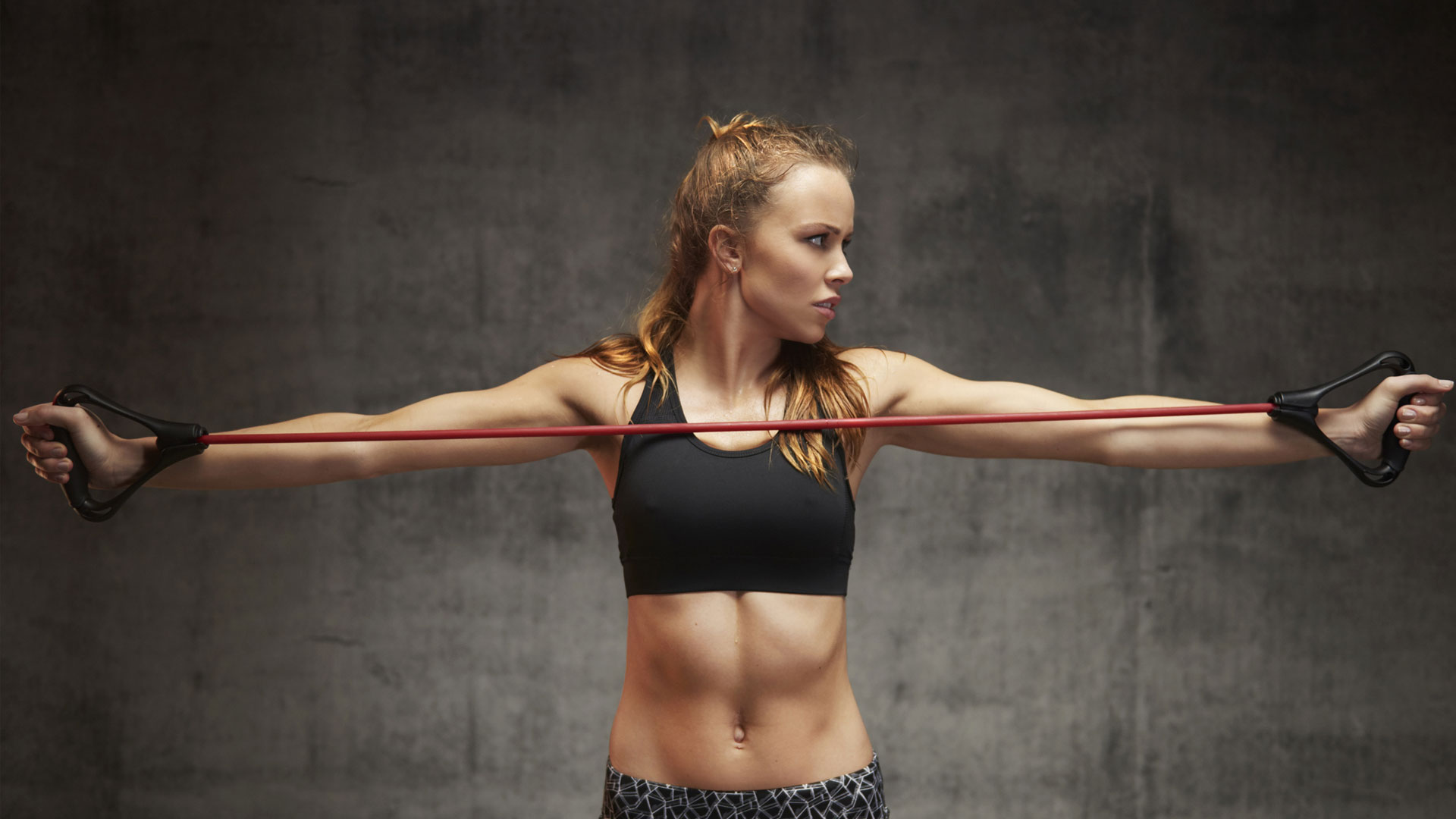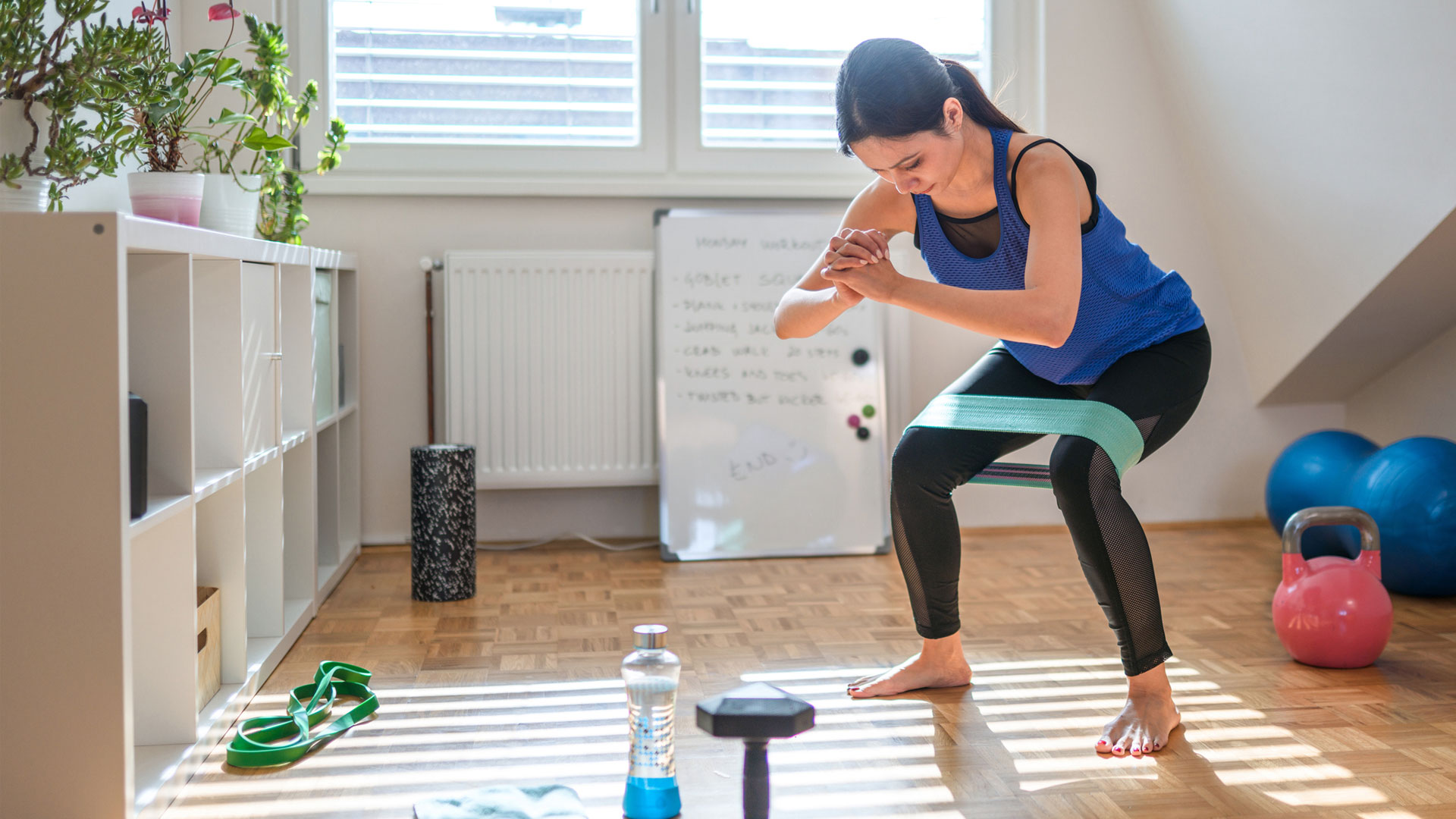What are the benefits of resistance bands?
The benefits of resistance bands include building strength, muscle and flexibility with this home gym favorite.

What are the benefits of resistance bands? Using these elastic or fabric bands to add tension or resistance during exercise makes it more difficult to do movements, and engages more muscles, which helps to build strength, as recommended by the CDC.
"You can loop them around your legs or arms, and they come in all different shapes and sizes. Like weights, they have different resistances to make your workout easier or harder," said personal trainer Jen Skym.
"Resistance bands recruit the 'stabilizer' muscles – this muscle group is significant because it supports our larger muscles and joints when we move, and helps reduce the risk of injury. So they are a safe and low-impact option for older people, and are often used for rehabilitation."
The best resistance bands are also lightweight, portable and incredibly versatile, so they are great for all different fitness levels from beginners to pro athletes. If you're interested in more home workout kit, check out our home weights sets deals.
Want to know more about the benefits of resistance bands? We reveal some of the benefits of resistance-band training for a stronger, healthier you.
- Related: TRX Strength Bands review
One of the main benefits of resistance bands is that they provide variety. You can do a full-body workout with them and, as with all strength training, they help to build muscle mass and tone.
This is because when you exercise, the muscles stretch and tear, and afterwards the body repairs the muscle fibers, and they get bigger and stronger (a process called hypertrophy).
Get the world’s most fascinating discoveries delivered straight to your inbox.
What’s more, a Harvard Medical School study found that regular resistance bands training could help age-related muscle loss, called sarcopenia.
"Resistance bands workouts also strengthen the back, shoulders and core muscles, which can improve posture and stability," said Skym.
Versatility
Another big benefit of resistance bands is they are so versatile, said Skym.
"You can do everything with a band that you can do with a weight: stand on one and do bicep curls, lateral raises, front raises and upright rows, hang one from a bar or tree to do lateral pull-downs or tie it to a bench.
"I love using them for anti-rotation work including the Pallof Press. Basically you have to engage and work your core muscles to resist the turning force created by the band. So the focus is on what’s not moving, rather than what is."
She adds: "Resistance bands are budget-friendly, lightweight and portable so they’re easy to pack in your suitcase when going on vacation. Because they're low impact there is very little strain on joints."
Works multiple muscles
Many resistance-band exercises can be compound (work several muscles at the same time), "so not only will you use more energy and burn more calories as a result, you get a full-body workout," said Skym.
"Plus, using bands means you have to be controlled in your movement because you are always adapting to the changing resistance. Your workout will be more challenging depending on how stretched the band is, which helps improve balance as well as physical strength."
Because resistance bands can feel a little unsteady to use, the constant tension means you have to work extra hard and engage the core to maintain control and form.
"Resistance bands workouts also activate the 'stabilizers’, the major muscle groups that, you guessed it, stabilize and support the body so they are really efficient for building core strength and stability," added Skym.
Burns fat
Want to know one of the main benefits of resistance bands? If your goal is to lose some weight and get lean, they are very effective for fat loss, said Skym.
"They can help with excess fat loss by increasing the 'after-burn’ effect post-workout. Essentially the harder you exercise, the more energy you need and the more calories and fat is burned, even after you’ve finished your training session.
"Resistance band training increases muscle size, which affects the number of calories you burn when the body is at rest. It can also help with keeping the weight off because of the way muscle size affects metabolism – when you increase your muscle mass, you boost your metabolic rate and that makes the body burn more calories."
Improved mobility
As we get older, our range of movement decreases due to wear and tear and many people develop sarcopenia, or age-related muscle deterioration. An American Physiological Society study revealed that the rate of muscle fiber loss and wastage (known as atrophy) was close to 1 per cent a year for people aged 50 and over.

One of the best ways to keep muscles healthy and strong, and to improve flexibility and mobility, is to use resistance bands, said Skym.
"All movement is good for mobility but the advantage of resistance bands is that you can use them to help gentle stretching. For example, you can do a hamstring stretch lying on your back, and increase the range of movement by using a resistance band to intensify the stretch." There's much more to stretching, which you can read in our benefits of stretching guide.
Researchers from the Jean Mayer USDA Human Nutrition Research Center on Aging at Tufts University found that this type of strength training was the antidote to age-related muscle loss.
Less back pain
The Covid-19 pandemic and working from home has meant more and more of us have been experiencing an achy back, shoulder and neck.
Slouching over computers and sitting on kitchen chairs at the wrong table height can lead to a rounded and compressed spine, hunched shoulders and a forward neck and head, which can cause pain and discomfort.
In fact a Sacro Occipital Technique Organization study found that 'forward head posture’ could decrease mid-spine mobility, which in turn can reduce respiratory function and can even increase the risk of death among older people.
"Exercising with resistance bands can counteract this damage by strengthening the back and abdominal muscles to reduce stress on the spine," adds Skym.
- Related: What is DOMS?

Maddy Biddulph is a freelance health and fitness journalist with over 26 years of experience working for consumer media in the US and UK. As a Level 3 personal trainer and weight loss advisor she is used to trying out and reviewing the latest health and fitness products. At Maddy Biddulph Personal Training, she runs one-to-one and small group sessions, as well as group exercise classes. She specializes in mobility work with seniors and runs regular chair workouts in her hometown of Oxford.


